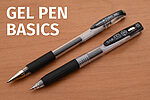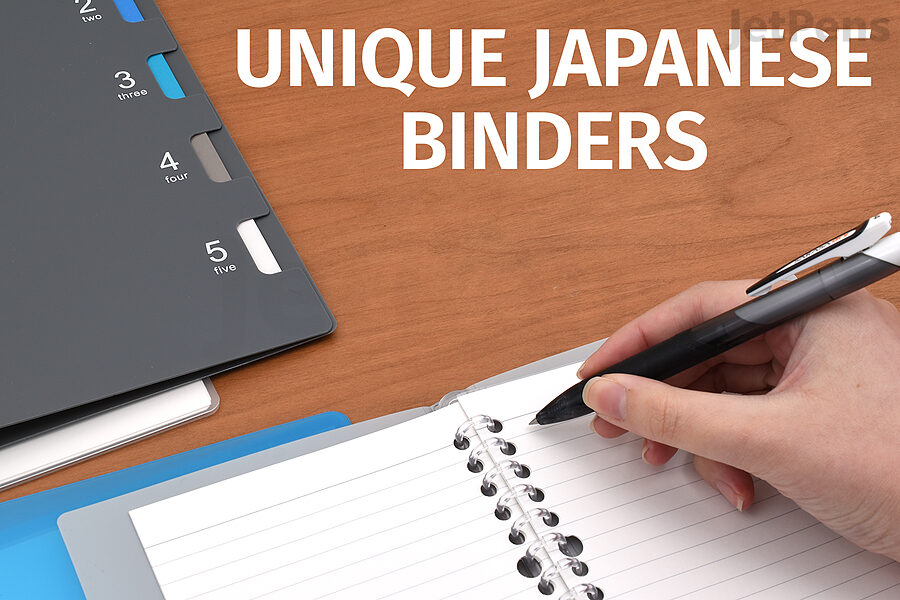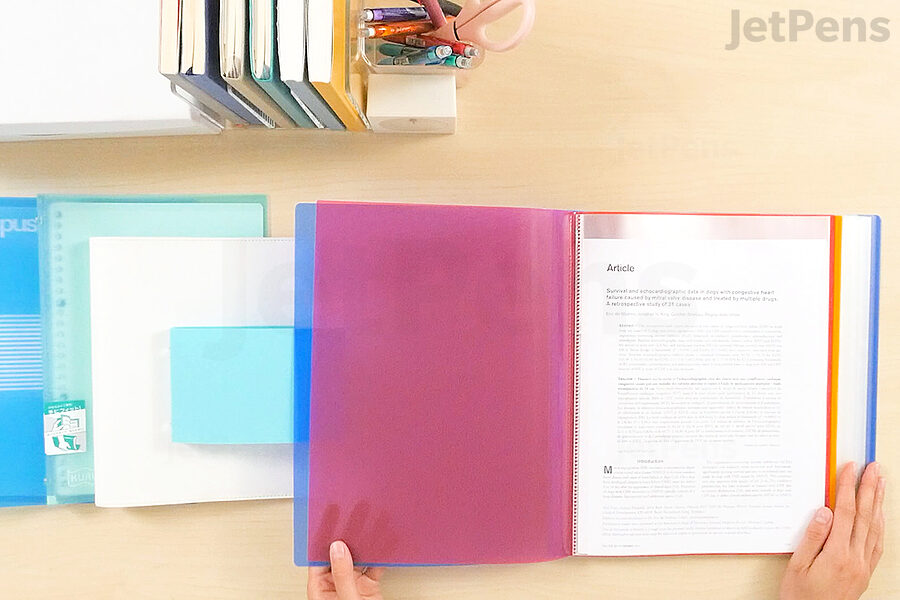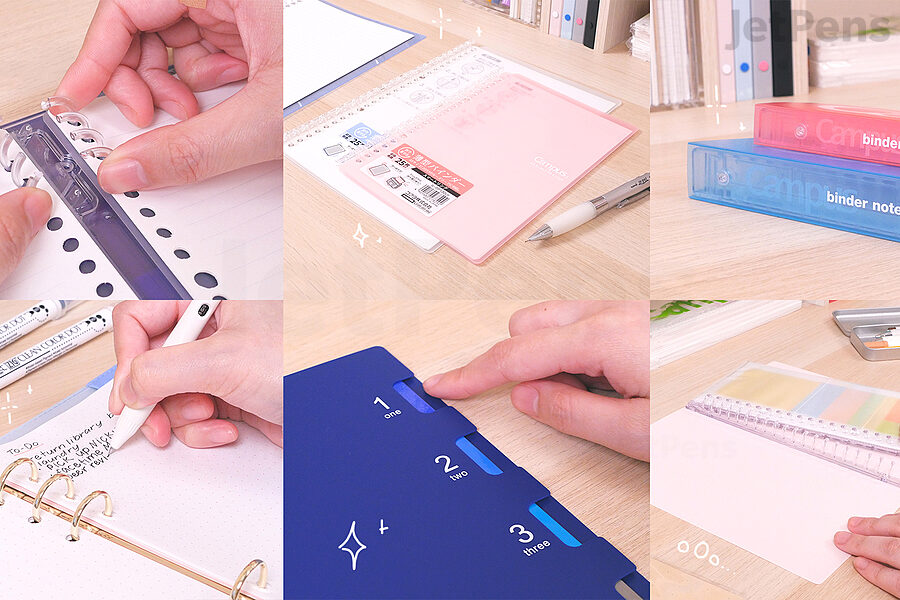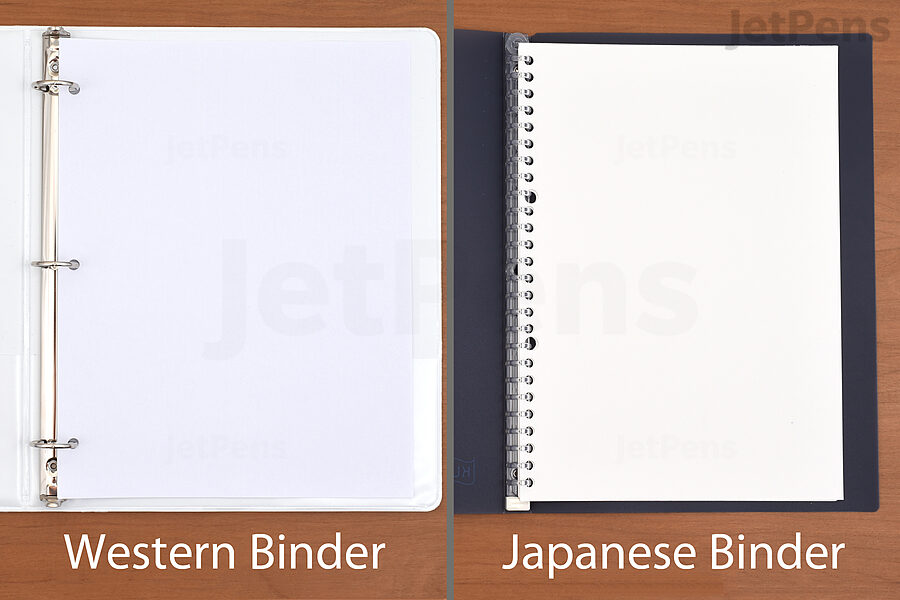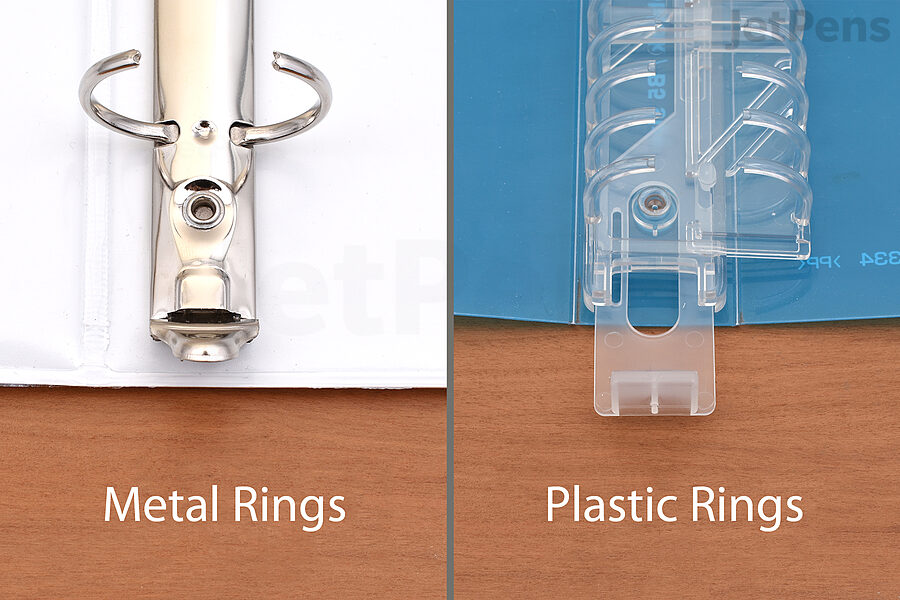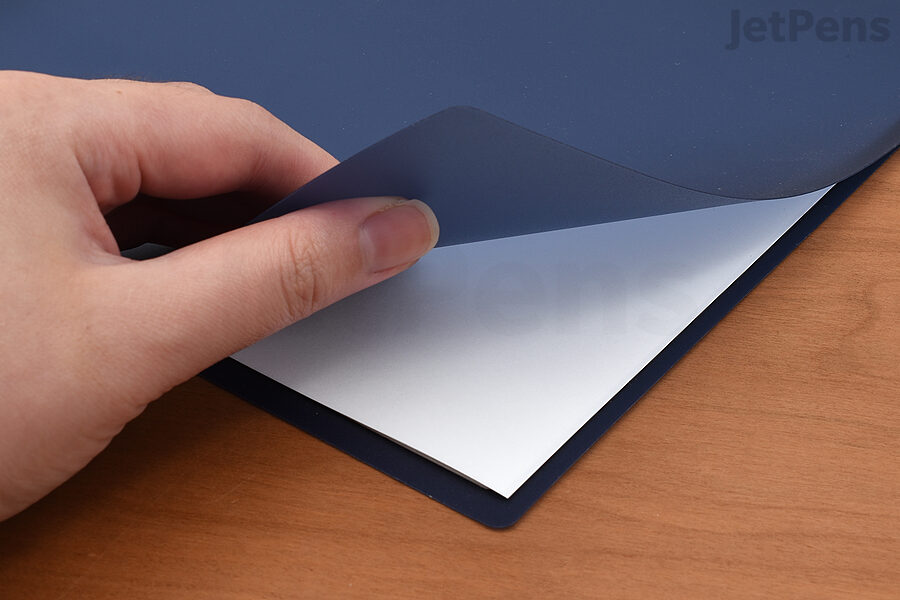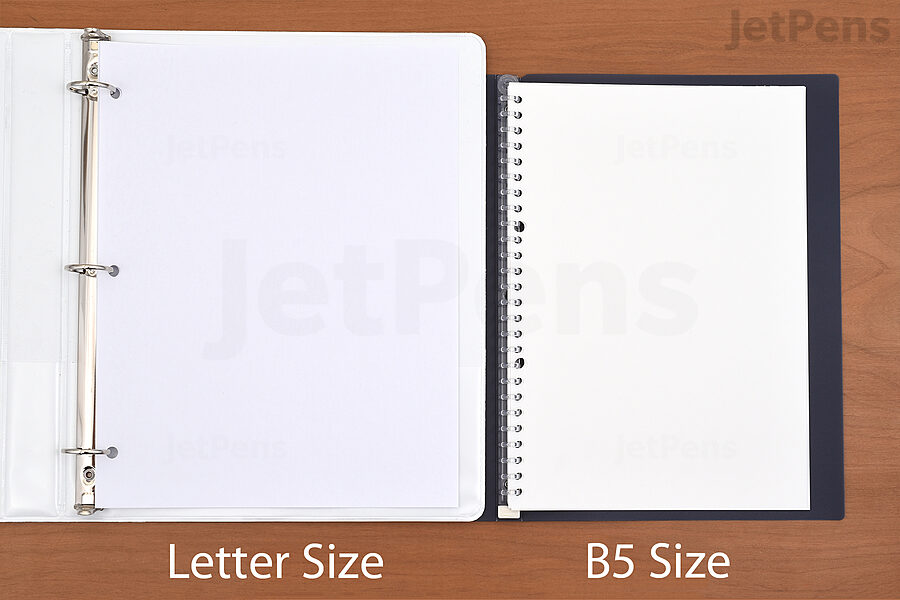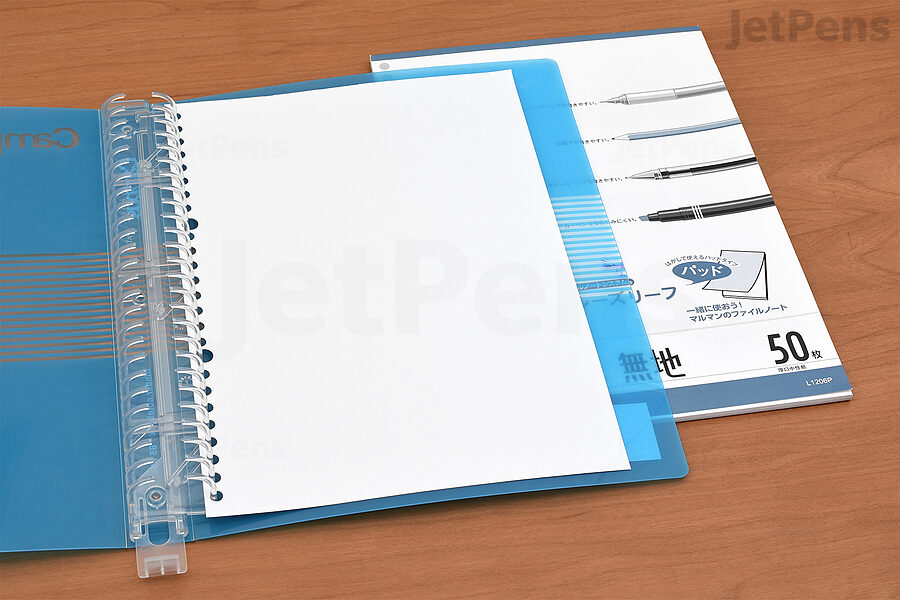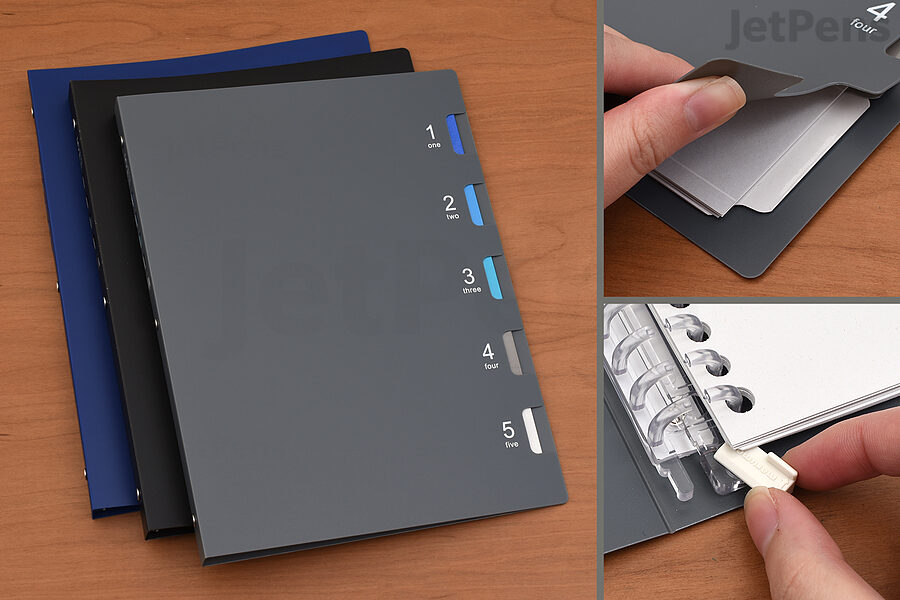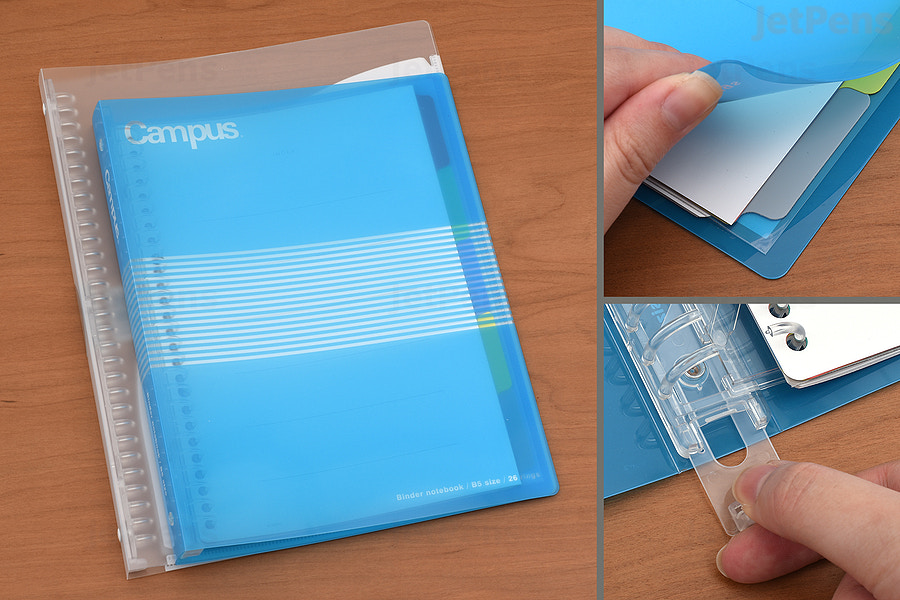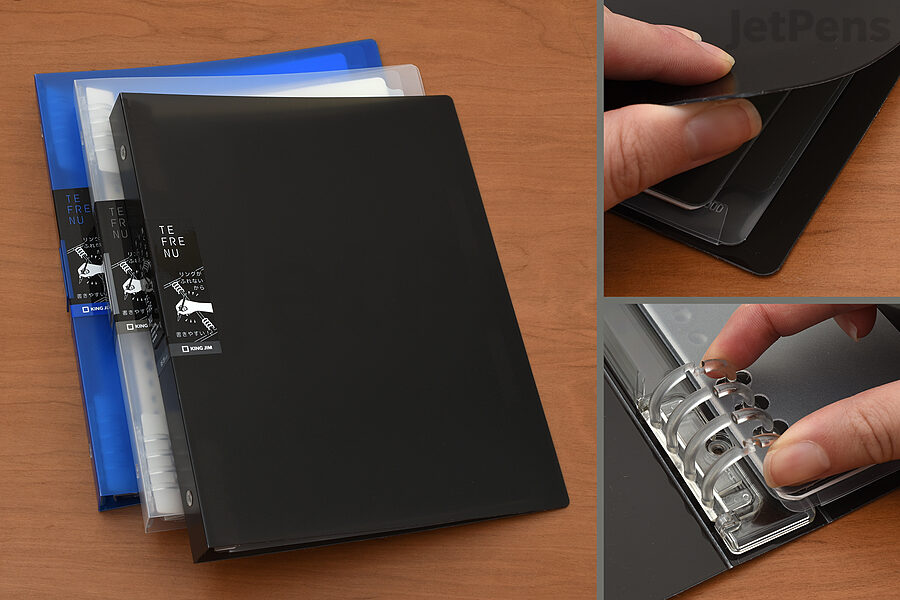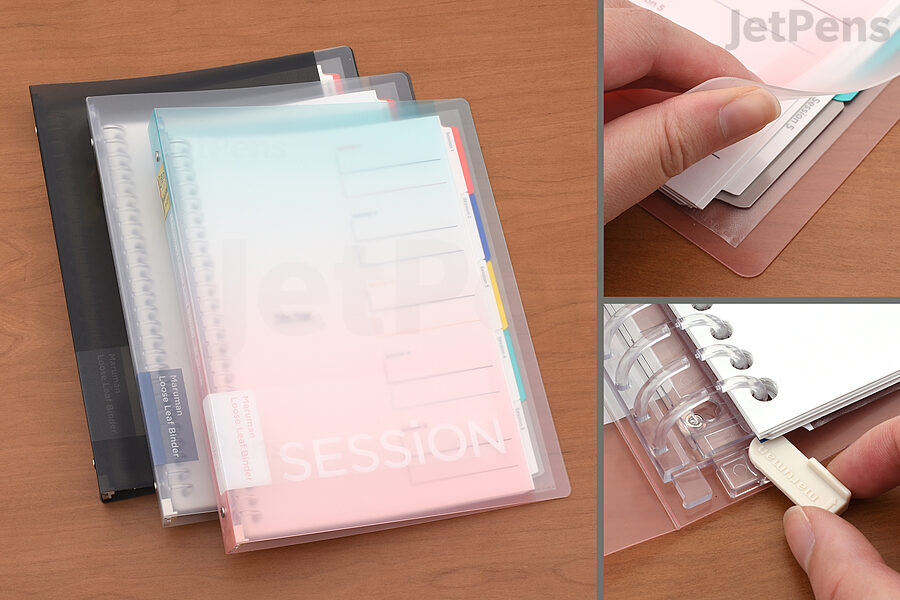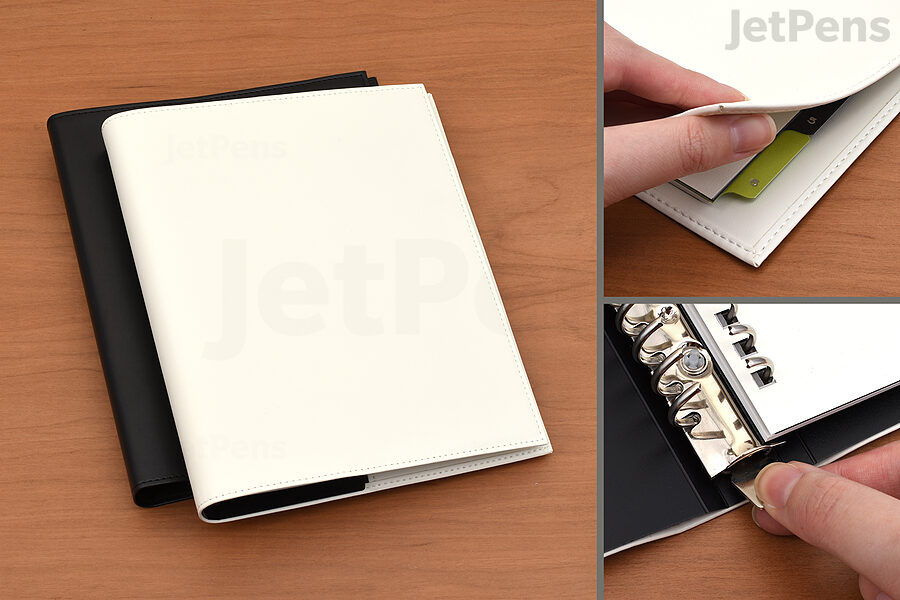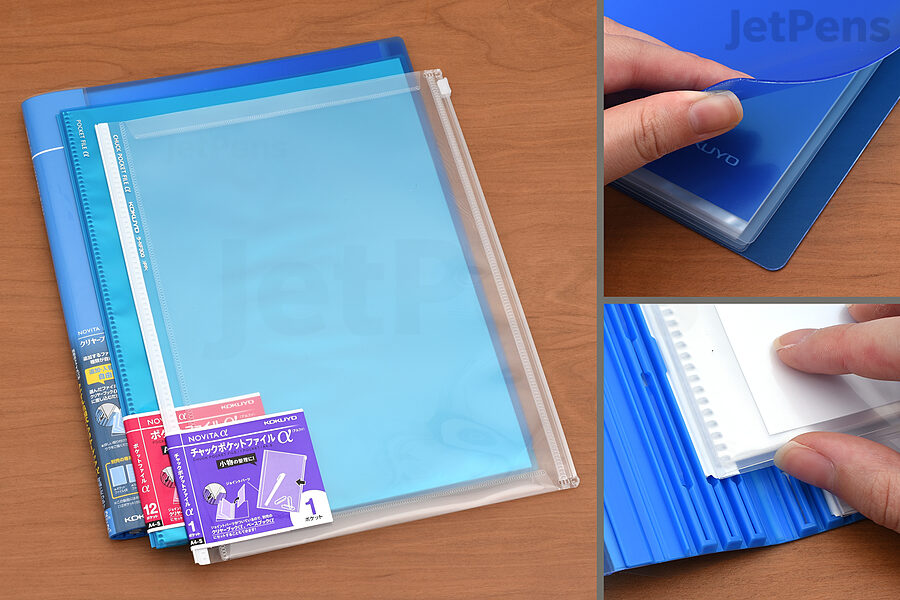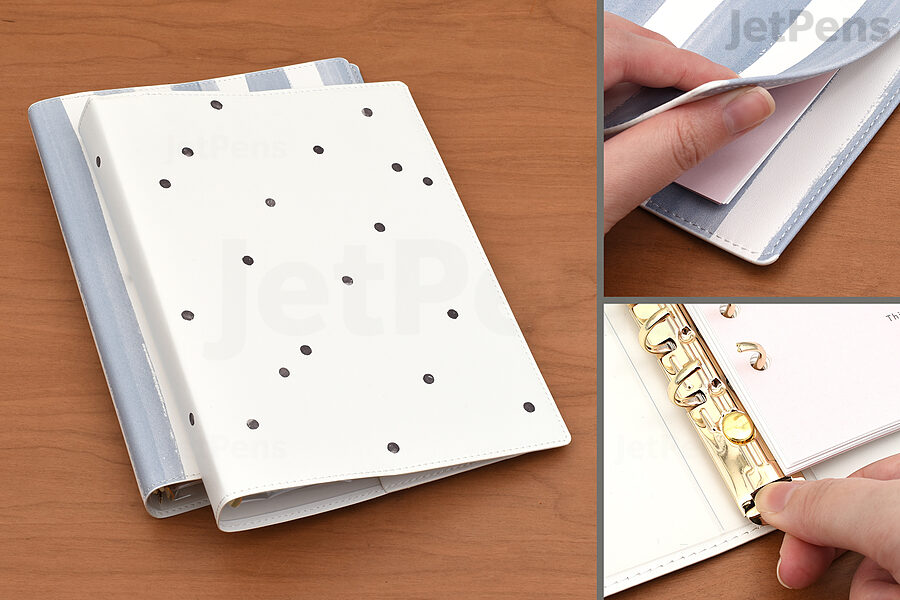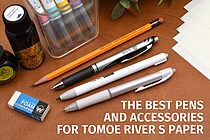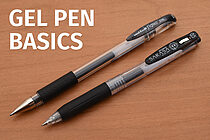An executive binder is a must in a work environment, and the
Maruman Giuris fits the bill. The luxurious cover is made of faux leather that is both professional in appearance and durable. A pen loop stitched to the inside back cover keeps a pen handy. Additionally, the Giuris uses Maruman’s highest quality
notebook paper for a smooth writing experience. The Giuris comes in an A5 size, which is small enough to fit in a briefcase or messenger bag while providing plenty of space for meeting notes. Though the binder has metal rings, it takes very little effort to open them.
The Kleid Fleek is another binder suitable for working professionals. It has understated yet stylish cover colors, and is filled with high quality paper.






